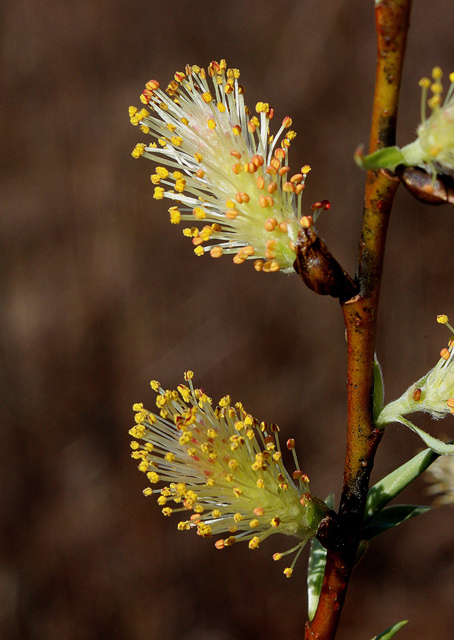
Common Name: Silky Willow
Full sun to shade; wet to medium moisture level; prefers sandy loam, gritty loam or sandy clay soils; acidic to neutral pH.
6-12 feet height by 6-12 feet spread; blooms in spring; winter flower buds are orange-apricot with white pussy-willow like flowers appearing in mid to late March; small, hairy capsules in June and when ripe, open to release tiny windblown seeds with silky hairs.
Growth Rate: Fast
Maintenance: Easy to grow. Can be cut back down to the trunk as needed to reinvigorate.
Propagation: Easy from cuttings; moderately easy from seed.
Native Region: Highland Rim, Ridge and Valley, and Blue Bridge provinces
Deciduous, multi-stemmed large shrub or small tree with ornamental foliage. One of the showiest of the willows. More adaptable and less aggressive than many other shrub willows but still has the high-water requirements. Considered a good native alternative to the non-native Russian Olive due to its narrow, silvery leaves. Common name reflects the hairy or silky undersides of the leaves. Catkins resemble those of the pussy willow but are somewhat less showy. Prefers boggy ground. Occurs naturally in marshes, low ditches, and low woods. Attracts birds, butterflies and bees.
